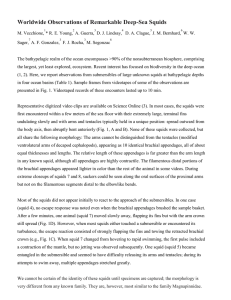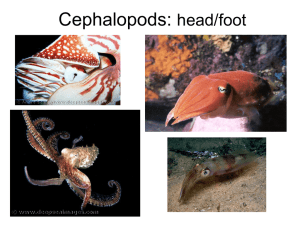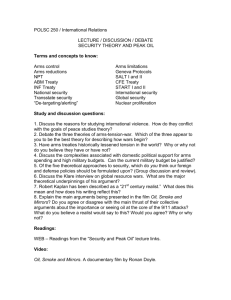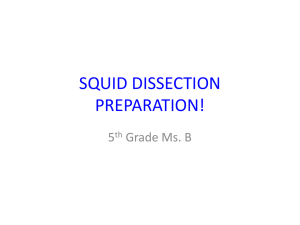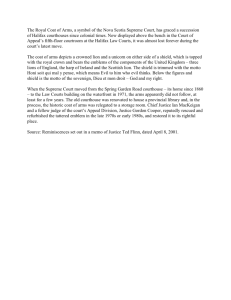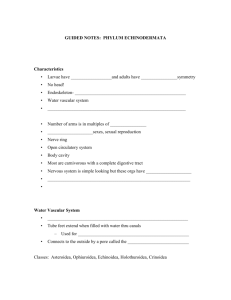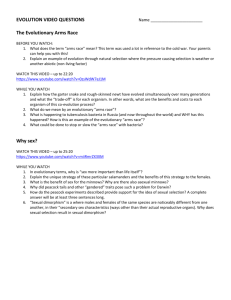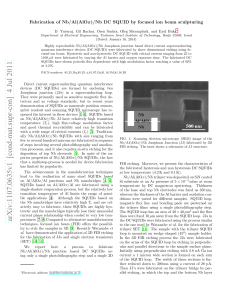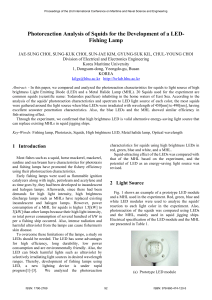PHYLUM MOLLUSCA
advertisement
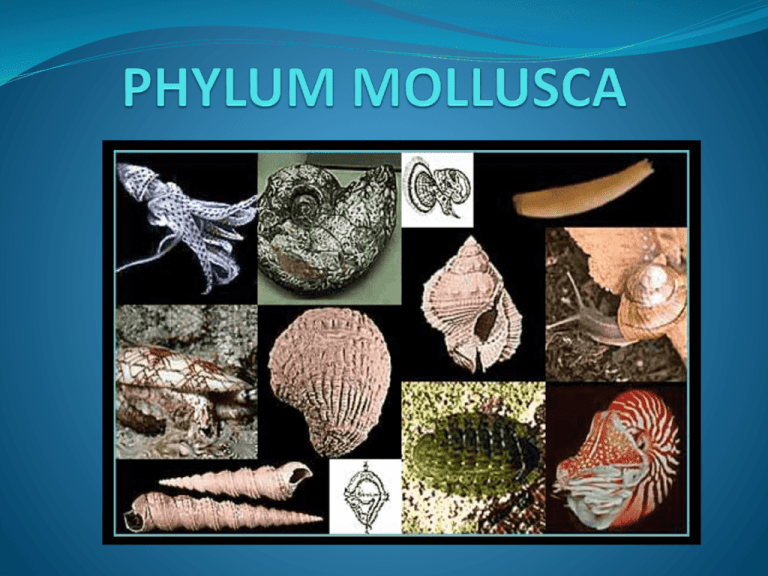
PHYLUM MOLLUSCA Invertebrates Freshwater, marine, & terrestrial Largest marine phylum 23% of named marine species Mantle Radula Ventral foot CLASS CEPHALOPODA Squids, octopods, cuttlefish, Nautiloidea Bilateral symmetry Marine Arms or tentacles ORDER TEUTHIDA – SQUIDS 8 arms in pairs of 2 2 tentacles (usually longer) Largest eye-to-body ratio FAMILY LOLIGINIDAE “pencil squids” Body tapers to a point Arms are partially retractable Buccal membrane has 7 lappets Sepioteuthis sepioidea Caribbean reef squid Cigar-shaped body Arms shorter than body 10-20 cm long Fins extend almost whole length of body Undulate rapidly as they swim Sepioteuthis sepioidea Unique behaviors Pointing bodies upward prior to striking prey Curling upward during territorial disputes Pointing head-down when approached by predators Found in Caribbean sea and off the coast of Florida Young congregate in turtle grasses Die after reproducing (like other cephalopods) First squid to be observed “flying”? Squid Flight ORDER OCTOPODA 8 arms No shell FAMILY OCTOPODIDAE Majority of know octopods Bottom-dwelling Suckers in one or two series One arm modified as open sperm groove in males Octopus briareus Caribbean reef octopus “Chunky” body compared to arms 40 – 60 cm long, up to 1.5 kg Dark ring around eye No dark borders on suckers Octopus briareus Cannibalistic when confined in small tanks with others Nocturnal hunters Reflective skin is easy to see at night Uses chromatophores for camouflage Disguise themselves as other species or objects One of the most intelligent invertebrates Very little sexual dimorphism Also die after reproducing Females live long enough to guard eggs
